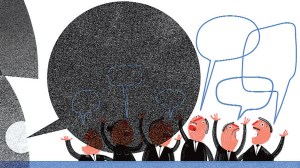I spy a copy: Mudra-Enterprise war gets dirty
MUMBAI, March 6: The Abbys, Indian advertising's most prestigious awards, have yet to be announced but reputations and campaigns are already...

MUMBAI, March 6: The Abbys, Indian advertising’s most prestigious awards, have yet to be announced but reputations and campaigns are already being annihilated and there’s an inescapable sense of, `seen that; been there…’ Last year for instance, four of the award-winning entries were later found to be fake. They were advertisements not for real products, but merely created for the sole purpose of winning awards.
This year of course, the competition has assumed a more Machiavellian dimension. The protagonists are two top-rung agencies, Enterprise-Nexus and Mudra. And like all good, lusty battles this one has a history too — a rather recent one. A few weeks ago at the annual Ad Review, organised by the Ad Club, Enterprise’s Mohammed Khan barely stopped short of calling Mudra’s creative directors “monkeys” and, its head A G Krishnamurthy “invisible” while rubbishing Mudra’s ad campaign for Max Touch cellphones. According to those present that evening, the usually genial Khan that night crossed the thinline between jokes and jibes. “For once, I felt that Mohammed had crossed all boundaries,” said one ad-wallah.
The attack was said to be all the more in bad taste because Enterprise had also pitched for the Max Touch account and lost out to Mudra. In their defence, Enterprise Nexus’s MD Rajiv Agarwal said in an interview to The Brief (an advertising magazine): “If we did such things to win business or influence a client, then we and the client must be stupid people.” Khan, also the chairman of Enterprise Nexus, added in the same interview: “All I did was call a spade a spade…My intention was not to humiliate anybody. We even laughed at ourselves…”
Ostensibly, Mudra seemed to have taken the jibes in its stride. Watchful agencies heaved a collective sigh of relief and busied themselves with the CAG awards to be held on February 27, 1998. Like all others, Enterprise-Nexus too sent an entry, the Sesa Seat Yellow Pages ad. But as entries were being sorted, a damning videotape quietly reached the CAGoffice which showed that Enterprise’s Sesa Seat Yellow Pages ad was a direct lift of a foreign ad a flagrant violation of the advertising awards code: originality.
Agarwal withdrew the ad of his own volition but not before the damage had been done. Rumours were flying fast and furious. It was being said that Enterprise-Nexus had been tipped-off that they were up for disqualification and that’s why they back-tracked. And everyone had just one question: Who sent the tape? Rumour mongers insisted that the VHS was sent by a still-smarting Mudra.
It was also said that the agency had written to the Advertising Agencies Association of India (AAAI) demanding an apology for Khan’s swiping and sniping. Not that Khan is in the mood for that. In the same interview to Brief he also said: “I apologise a thousand times every day. In this case (though), I’ve done nothing that deserves an apology. I stand by every word I said.” The executive director of Mudra, Madhukar Kamath, however, has the last word. He says, “Theissue is dead. And we do not respond to rumours and allegations.”
Ad-industry watchers, however, assert that that’s not entirely true. For, once again when entries were being judged for the Abbys, the “offending” Sesa Seat ad found its way into the Abby entries, albeit in the language category. But Rajiv Agarwal defends that by saying the language ad is neither a translation nor an adaptation of the foreign ad. A view that is corroborated by Advertising Club’s chairperson Ramesh Narayan. “We agree with Rajiv Agarwal’s point. The ad’s original — thought through in the language (Marathi) — and completely different. As far as I am concerned, the issue is resolved.” The head of Canco Advertising, Narayan, also dismisses the Sesa Seat English language entry as “sheer coincidence”.
He cites a previous example of two agencies coming up with the same ad, at the same time. The issue was resolved amicably and both creative heads accepted that it was a “bizarre coincidence”.



- 01
- 02
- 03
- 04
- 05



























